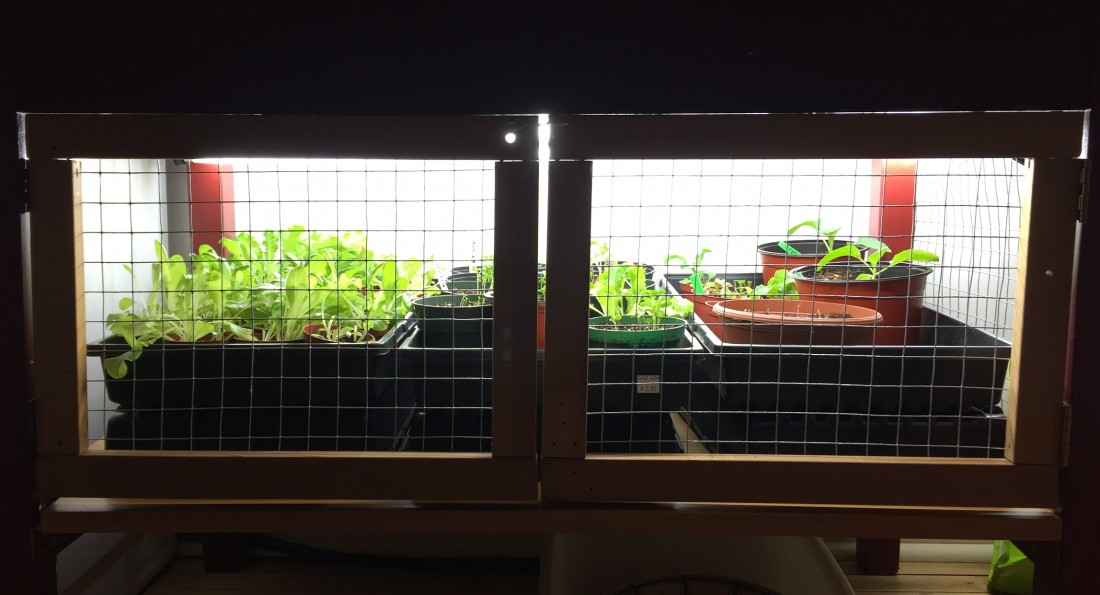Prepare for a green winter
Tips for moving your garden inside before the snow falls
Hermitting up for the winter isn’t always a welcome activity, but the seasonal change is especially unwelcome to our gardens. Finding space and dollars to support indoor plants can be tricky when trying to fit them into tiny shared homes or apartments, but not everyone is skeptical.
“Small spaces are fine for growing food or other beautiful plants. It can keep things focused and simple, which can be more fun and less work compared to large gardens,” says Dave Hansen, founder and co-manager of Sage Garden Greenhouses (SGG) for the past 20 years.
Hansen describes the satisfaction in being self-sustaining over the winter and offers tips on how to make the move a little less painful for both parties involved.
“There’s a very wide variety of things that can be grown indoors, from fresh herbs to unusual crops such as coffee,” Hansen says. “Figure out your goals. Are you looking to grow a few things for fun, or is it more for food sustainability? What things do you use frequently, and what types of ingredients do you wish you had fresh in winter?”
Hansen suggests deciding if you want to care for high or low maintenance plants, which will inform what you grow and how you grow it. Keep in mind allotted space, ample light and watering as required, but Hansen also says to remember less common factors such as temperature and air circulation.
“In terms of the cost of setting up an indoor growing space, the budget can range from $25 to $100-plus, depending on what type of setup is desired,” Hansen says. “The main investments will be in lighting ($10 to $40), compost soil ($5 to $13), pots and seeds. Some gardeners use heat mats ($25 to $75) and an indoor zip-up greenhouse ($30 and $90). The cheaper ones are fairly junky, so a little more investment pays here.”
Hansen says SGG members receive 20 per cent off every first Tuesday of the month, a class on growing herbs and greens with supplied lights, soil seeds and a workshop on how to manage it all. SGG also offers a themed fall and winter gardening club for free if you bring some baked goodies or a recipe.
“It is so fun to have friends over and be able to show them where the food they are eating at a dinner party was grown right there in the kitchen or living room,” Hansen says.
“Most things that are edible require lots of light particularly summer herbs and veggies. It is very likely that grow lights will be involved if regular harvest is a goal. Play to your strengths,” Hansen says. “If you have a warm space grow warm crops. If it tends to be cool there are awesome options for these conditions too. But try to avoid going against the conditions - this just becomes frustrating.”
Winnipeg doesn’t really have any shared indoor greenhouses, Hansen says, mentioning that the startup cost of such a community venture would range from between 100 - 500K and up; plus operating expenses. For the most success with your own indoor garden, Hansen says to ensure you don’t neglect the basics of plant health, get your set up flexible for an easy upscale and suggests keeping your options fun and manageable.
Veda Koncan, gardener in training, turned to her mother and mother-in-law as gardening guides and has suggestions for first time summer to winter transitions.
“I keep plants I know I am going to move back and forth in pots, so it’s easy. In my basement apartment I kept a bank of Lee Valley grow lights,” Koncan says. “(But) grow lights are hella expensive.”
Koncan suggests growing edibles that need less light and therefore require less supplies, like sprouts or mushrooms, the latter of which she grew from a kit. She also uses cuttings from smaller houseplants she propagates each spring.
“It’s hard to grow lots of real veggies inside someone's home, (and propagation) depends very much on the plant,” Koncan says. “Cut at the appropriate spot for that kind of plant, dip it in rooting hormone or honey and put in some sterile seed starting mix. (That’s) a good general procedure.”
Koncan tells of inspiring tales of other cities converting abandoned department stores into community gardens and dreams of seeing similar conversions in Winnipeg. Despite Koncan’s enthusiasm, there are still some drawbacks to indoor self-sustainability.
“My biggest problem with indoor gardening was that there wasn't the weather to dry things out and my plant babies were more susceptible to some issues like fungus gnats. I definitely had to pick more carefully what to grow easily indoors and set myself up for more success. Greens and herbs were the most successful.”
Published in Volume 71, Number 8 of The Uniter (October 27, 2016)







